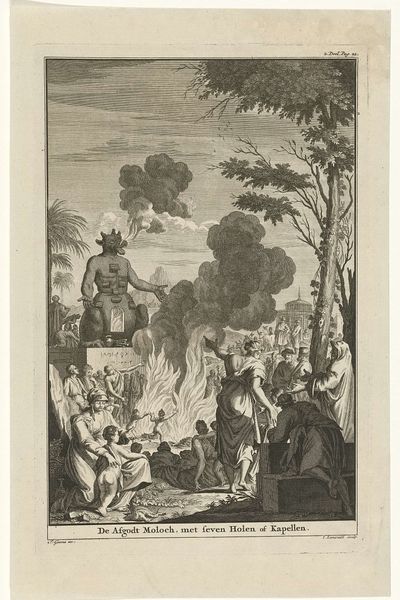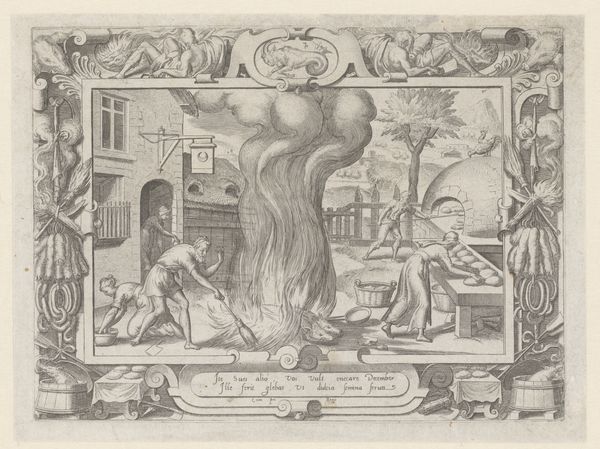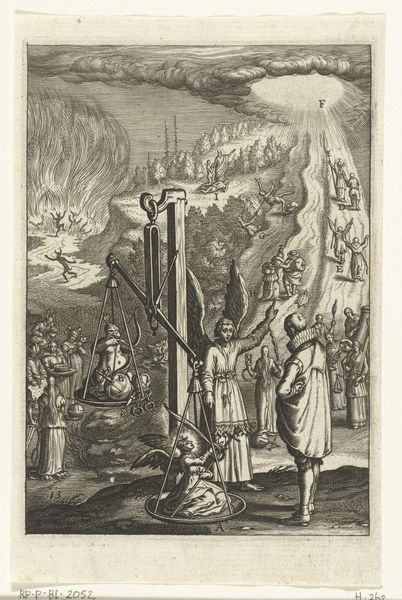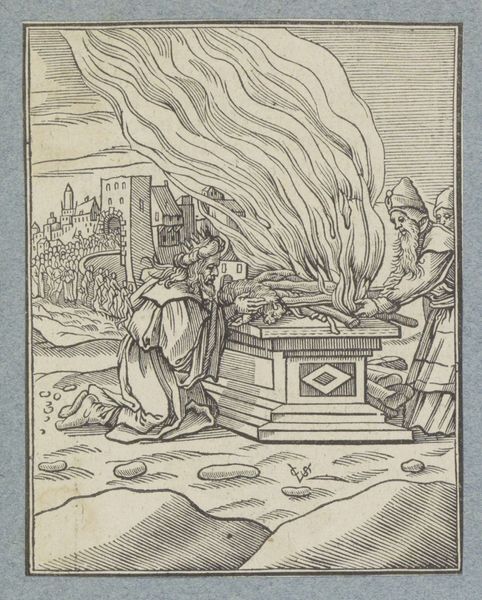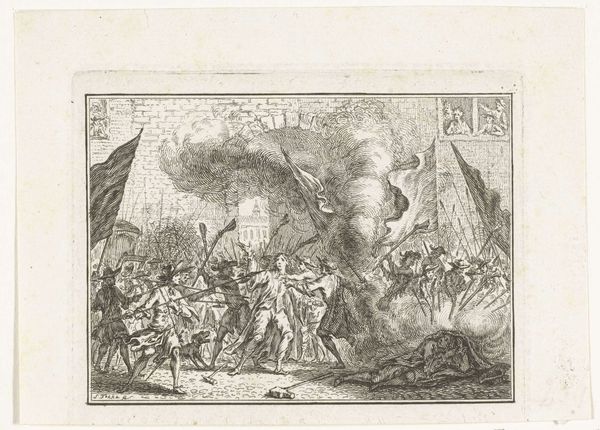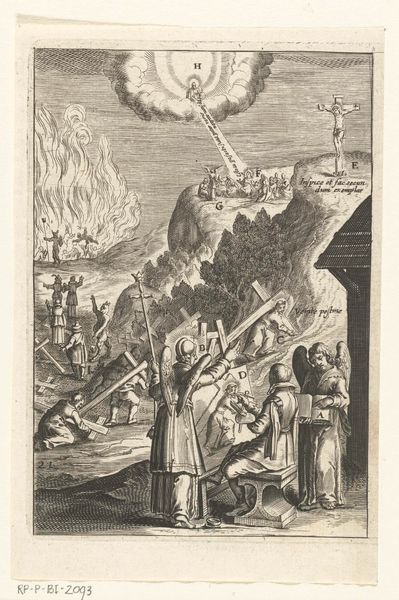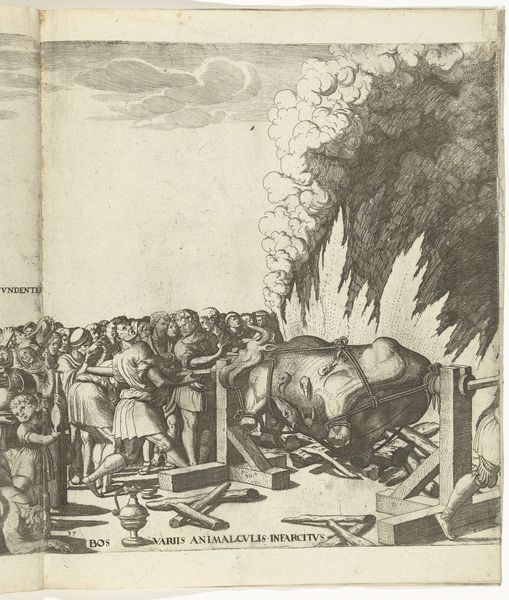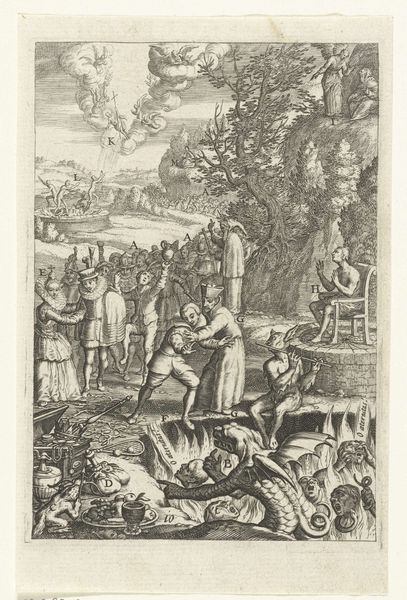
print, engraving
#
narrative-art
#
pen drawing
# print
#
old engraving style
#
classical-realism
#
figuration
#
line
#
history-painting
#
italian-renaissance
#
engraving
Dimensions: height 136 mm, width 182 mm
Copyright: Rijks Museum: Open Domain
Curator: This engraving from 1572-1573 by Giovanni Battista Fontana, currently held here at the Rijksmuseum, is titled "Romulus offers to the god Hercules". Editor: My first impression? Stark and precise. It feels like stepping into a meticulously staged scene. The figures seem caught between the earthly and something grander, a feeling underscored by the towering fire. Curator: Fontana’s mastery with line is definitely on display here, a hallmark of classical realism that lends the work a certain gravitas. He's working within a strong tradition of Italian Renaissance printmaking, but he brings his own flair to the narrative. It is from a set, focused on Roman history, of which this is plate number ten. Editor: I’m really drawn to the interplay between light and shadow. The dark, precise lines of the engraving technique highlight the musculature of Hercules, rendering his figure with a striking three-dimensionality that sets him apart as both a figure, and a concept in the space. He towers at the center-left. Curator: Yes, Hercules is stoic on that pedestal, as Romulus and his entourage cluster on the right before a great blazing altar, deep in ceremony, in supplication. It strikes me as somewhat bleak; I’m pondering what Fontana might have intended by positioning Romulus, one of Rome’s legendary founders, against the backdrop of divine demand. He does seem burdened. Editor: Absolutely. There's a strong contrast between the very linear, almost architectural precision, and the somewhat amorphous forms created by the flame. Semiotically, that flame represents more than sacrificial ritual; it signifies a transition, purification maybe, but it also consumes. And Hercules, with his back to us on his podium, acts almost as an avatar of the viewer. He too observes and does not intervene, implicated. Curator: Thinking about figuration and narrative in art, pieces like this offered lessons for a world that valued history painting. To think, this small print likely circulated widely, planting its epic imagery into the minds of many. Editor: What’s left with me, in the end, is Fontana’s technical command in conveying a historical weight, yet framing it through his subjective vision of what that story signifies.
Comments
No comments
Be the first to comment and join the conversation on the ultimate creative platform.

